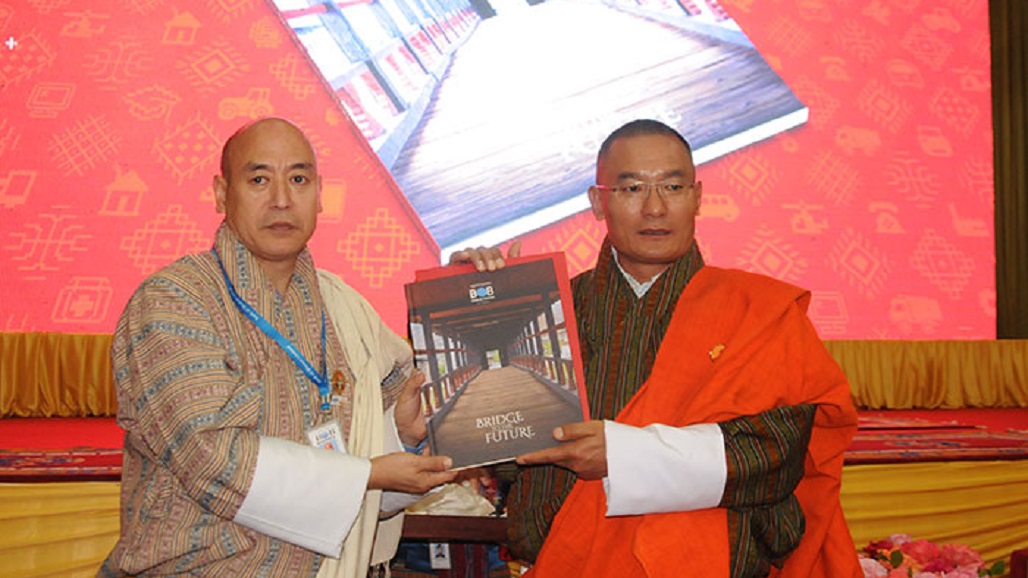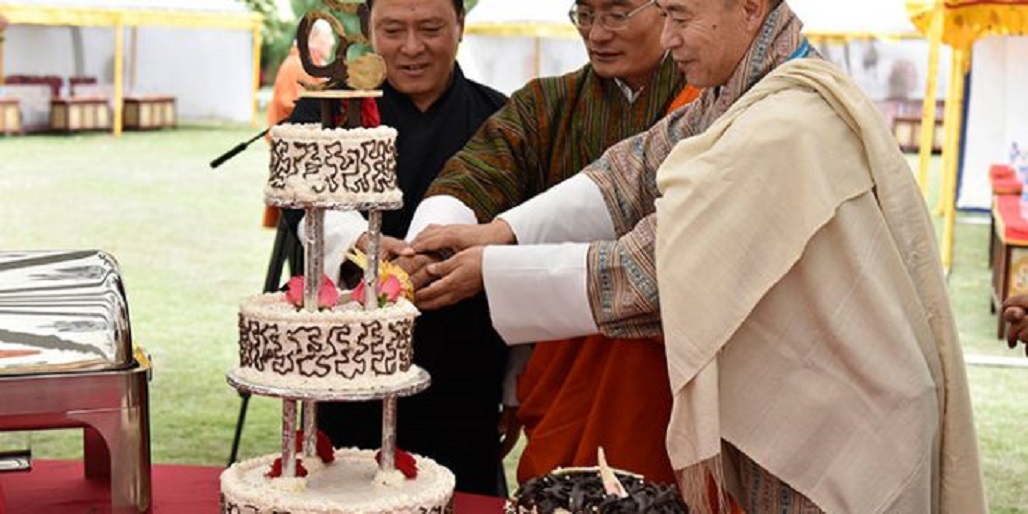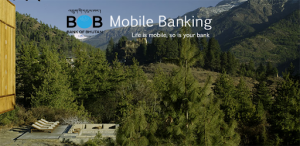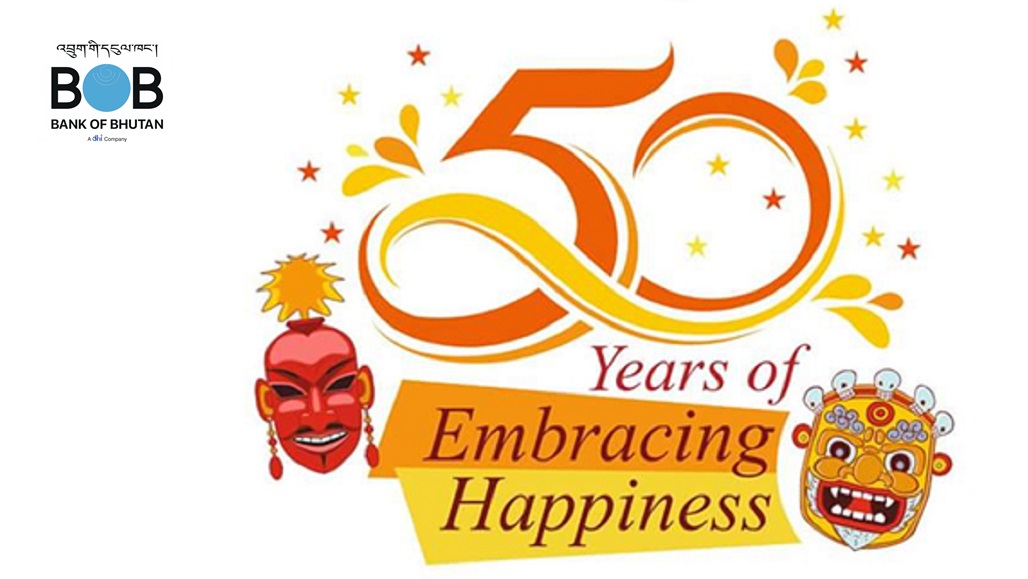Thimphu – Exactly 50 years back on this day, Late His Majesty The Third Druk Gyalpo Jigme Dorji Wangchuck inaugurated the first bank in the country, Bank of Bhutan (BoB). He was the first person to open a bank account in the country.
Twenty other Indian traders, government officials and a few businessmen opened banks accounts on the same day.
In marking the 50th anniversary of the bank yesterday, one thing that animated the festive mood was the visions of Late His Majesty, that a formal trading system, saving culture and entrepreneurial spirit are well-thought out in the objectives of the first bank way back in 1968. The foresight was that a formal banking system would catalyse a sustainable socioeconomic development that would not only bring about economic progress, but also prosperity among people.

Prime Minister Tshering Tobgay and BoB’s CEO, Pema Nadik launch the coffee table book reflecting BoB’s journey in the last five decades
After enormous research, The Late King found a partner in Chartered Bank, a British bank functioning from Kolkata, to help Bhutan set up its first bank in Phuentsholing. The structure still stands today. BoB was set up with a capital of Nu 2.50M and a reserve fund of equal amount. An interest of three percent was given on deposits. The bank gave out a first loan of Nu 500,000 to food preservation factory in Samtse.
BoB’s first Bhutanese Managing Director, Tshering Dorji, in his reflection published in the coffee table book that was also launched, wrote that tikchungs, coins equivalent to 50 Indian paise used in pre-banking age, were brought into the banking system. The coins would come in truckloads from Phuentsholing to Thimphu late in the evening and everyone, including the manager and the peon would stay back to unload the truck.

The Prime Minister, Governor and BoB CEO cut the Golden Jubilee celebration cake
He also said that the bank had a wooden board with 250 holes the size of a coin and two boards joined together with hinges. Bank staff would spread fistfuls of tikchungs over the board and after all the slots are filled, surplus coins were removed. One such process would mean a count of 500 tikchungs. Prior to that 5,000 pieces of tikchungs were tied inside a piece of cloth with drawstrings and sealed. The value of each bag was Nu 2,500.
Later, an American company supplied coin-counting machine. “This was the first automated device the bank used,” Tshering Dorji said.
The coffee table book titled, “Bridge to the future” also mentions the predominance of barter system even with the introduction of bank. Steps towards financial inclusion had already been taken by 1971 to ease barter system by introducing paper currency. The very first currency in the denomination of Nu 10, Nu 5 and Nu 1 was issued on April 6, 1974. A year later Nu 100 notes were introduced. The first notes bear the signature of the then deputy managing director, Dasho Yeshey Dorji.
BoB was not the only commercial bank but also had the responsibility of a central bank. The bank had a governor, Dasho Chogyal, the then finance minister. In 1971, the bank partnered with State Bank of India with a share contribution of Rs 1M. SBI initially held 40 percent of the share while the government held 60 percent. Today, the Druk Holding and Investments hold 80 percent of the share and SBI holds 20 percent.
Golden Jubilee celebration in Thimphu
 On May 28, 2018 celebrating the day with the theme “embracing happiness”, employees, both present and former, guests, partners, shareholders and customers were all engaged in celebrating the day.
On May 28, 2018 celebrating the day with the theme “embracing happiness”, employees, both present and former, guests, partners, shareholders and customers were all engaged in celebrating the day.
In Thimphu, the event was marked at the convention centre with the Prime Minster as the chief guest. Lyonchhen Tshering Tobgay said that BoB has played a leadership role in providing financial services to the nation through the introduction of internet banking, SMS banking, ATM services, and mobile banking. “Our financial institutions are growing, of the 205 Gewogs, 200 Gewogs has Gewog Bank,” he said.
The bank’s chief executive officer, Pema Nadik said that from its first profit of Nu 40,972 in 1969, BoB’s profit last year was more than Nu 700M. From 20 accounts, the bank today has about 250,000 accounts. The seven branches in 1978 has sprouted into 48 and 230 connect agents. Until 2009, manual ledgers were maintained. The CEO said that technological revolution was embraced even with some branches incurring losses. The bank, which started with three Bhutanese employees five decades ago, employs more than 750 Bhutanese today.
“In this journey of progress, BoB pledge to continue fulfilling the aspirations of the people and contribute to nation building while being socially conscious,” the CEO said. He said that the bank has a promising future. “In the last five decades, BoB had the privilege to serve three great kings. Success would not be achieved without the vision of our Kings, support of our shareholder and the board,” he said.
The bank also honoured its former employees, partners, shareholders and clients during the event.

Established in 1968 through a Royal Charter the Bank of Bhutan is the oldest and largest bank in the Kingdom with presence in all Dzongkhags through a network of 51 branch offices of which 15 are extension counters. The Bank is owned by Druk Holding and Investments (the investment arm of the Royal Government of Bhutan) and the State Bank of India, the largest public sector bank in India in an 80:20 ratio.


Leave a Reply